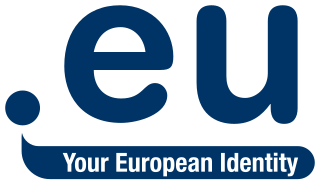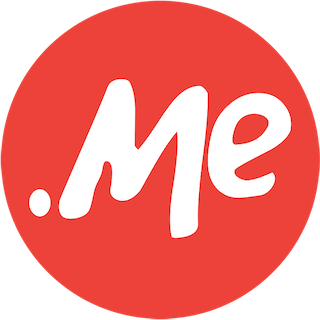A domain name registry is a database of all domain names and the associated registrant information in the top level domains of the Domain Name System (DNS) of the Internet that enables third party entities to request administrative control of a domain name. Most registries operate on the top-level and second-level of the DNS.
The domain com is a top-level domain (TLD) in the Domain Name System (DNS) of the Internet. Created in the first group of Internet domains at the beginning of 1985, its name is derived from the word commercial, indicating its original intended purpose for subdomains registered by commercial organizations. Later, the domain opened for general purposes.

.eu is the country code top-level domain (ccTLD) for the European Union (EU). Launched on 7 December 2005, the domain is available for any person, company or organization based in the European Union. This was extended to the European Economic Area in 2014, after the regulation was incorporated into the EEA Agreement, and hence is also available for any person, company or organization based in Iceland, Liechtenstein and Norway. The TLD is administered by EURid, a consortium originally consisting of the national ccTLD registry operators of Belgium, Sweden, and Italy, joined later by the national registry operator of the Czech Republic. Trademark owners were able to submit registrations through a sunrise period, in an effort to prevent cybersquatting. Full registration started on 7 April 2006.

.uk is the Internet country code top-level domain (ccTLD) for the United Kingdom. It was first registered in July 1985, seven months after the original generic top-level domains such as .com and the first country code after .us.

.to is the Internet country code top-level domain (ccTLD) of the Kingdom of Tonga.
A country code top-level domain (ccTLD) is an Internet top-level domain generally used or reserved for a country, sovereign state, or dependent territory identified with a country code. All ASCII ccTLD identifiers are two letters long, and all two-letter top-level domains are ccTLDs.
.ad is the Internet country code top-level domain (ccTLD) for Andorra. It is administered by Andorra Telecom.

.ae is the country code top-level domain (ccTLD) in the Domain Name System of the Internet for the United Arab Emirates. It is administered by .aeDA which is part of the Telecommunications and Digital Government Regulatory Authority of UAE (TDRA).

.ws is the Internet country code top-level domain (ccTLD) for Samoa. It is administered by SamoaNIC, for the Ministry of Foreign Affairs of the Government of Samoa.

.es (españa) is the country code top-level domain (ccTLD) for Spain. It is administered by the Network Information Centre of Spain.

.cl is the Internet country code top-level domain (ccTLD) for Chile. It was created in 1987 and is administered by the University of Chile. Registration of second-level domains under this TLD is open to anyone, as established by the current regulation for the operation of the Domain Name Registration .CL since December 2013, which eliminated the requirement for foreign registrants to have a local contact with a RUN, the Chilean national identification number.

.vi is the Internet country code top-level domain (ccTLD) for the U.S. Virgin Islands.

.uy is the Internet country code top-level domain (ccTLD) for Uruguay. Domain names can be registered at second-level or at third-level. As of 11 June 2012, second level .uy registrations are possible.

.in is the Internet country code top-level domain (ccTLD) for India. It was made available in 1989, four years after original generic top-level domains such as .com, .net and the country code like .us. It is currently administered by the National Internet Exchange of India (NIXI).

.na is the Internet country code top-level domain (ccTLD) for Namibia corresponding to the two letter code from the ISO-3166 standard.

.np is the Internet country code top-level domain (ccTLD) for Nepal. It is administered by Mercantile Communication Pvt Ltd.
.ps is the Internet country code top-level domain ccTLD officially assigned to the State of Palestine. It is administered by the Palestinian National Internet Naming Authority.

.tt is the internet country code top-level domain (ccTLD) in the Domain Name System of the Internet for Trinidad and Tobago.
A domain hack is a domain name that suggests a word, phrase, or name when concatenating two or more adjacent levels of that domain. For example, ro.bot and examp.le, using the domains .bot and .le, suggest the words robot and example respectively. In this context, the word hack denotes a clever trick, not an exploit or break-in.

.me is the Internet country code top-level domain (ccTLD) for Montenegro.














